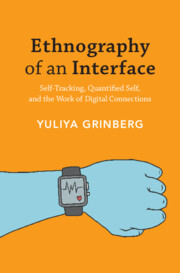Book contents
- Ethnography of an Interface
- Reviews
- Ethnography of an Interface
- Copyright page
- Epigraph
- Contents
- Preface
- Acknowledgements
- Introduction
- 1 Quantified Self and the Culture of Personal Data
- 2 Seeing Double in Digital Entrepreneurialism
- 3 Acting Like Members, Thinking Like Vendors
- 4 Hustling with a Passion
- 5 The New Normal
- 6 The Promises and Failures of Digital Connections
- Conclusion: Community at a Crossroads
- Notes
- Bibliography
- Index
- References
- Ethnography of an Interface
- Reviews
- Ethnography of an Interface
- Copyright page
- Epigraph
- Contents
- Preface
- Acknowledgements
- Introduction
- 1 Quantified Self and the Culture of Personal Data
- 2 Seeing Double in Digital Entrepreneurialism
- 3 Acting Like Members, Thinking Like Vendors
- 4 Hustling with a Passion
- 5 The New Normal
- 6 The Promises and Failures of Digital Connections
- Conclusion: Community at a Crossroads
- Notes
- Bibliography
- Index
- References
Information
- Type
- Chapter
- Information
- Ethnography of an InterfaceSelf-Tracking, Quantified Self, and the Work of Digital Connections, pp. 197 - 210Publisher: Cambridge University PressPrint publication year: 2025
